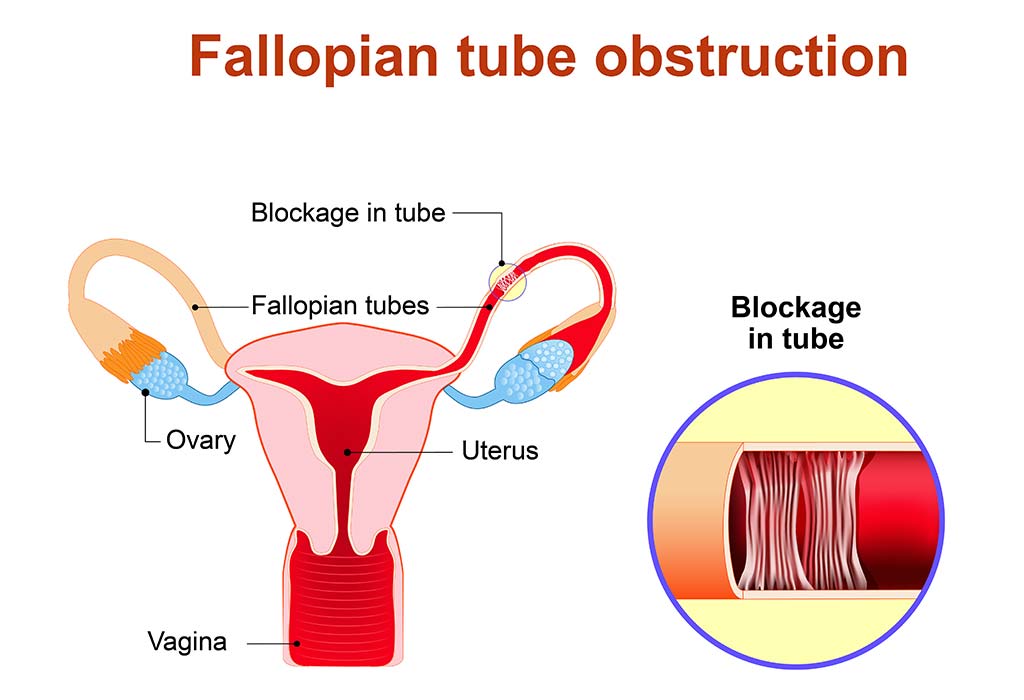Chromopertubation – Procedure, Risk, and More
Chromotubation, also called chromopertubation, is a procedure performed medically. The process involves the introduction of a blue-coloured dye into the uterine cavity through the cervix. As the dye flows through the fallopian tubes, it provides a visual confirmation of whether the tubes are open or blocked, which is crucial for women experiencing infertility. While this test is done to understand the causes of failing to conceive, you should conduct extensive research before getting this procedure done. In this article, we will walk you through the procedure in detail, including its purpose, step-by-step process, potential risks, and benefits.
What Is Chromotubation?
Chromotubation is part of a slight invasive surgery called laparoscopy. Chromotubation is a process of determining infertility issues. A block in the fallopian tubes could be one of the many causes of not getting pregnant. Chromotubation is a medical procedure performed under general anesthesia and can also determine other underlying issues possibly hindering chances of becoming pregnant (1).
Why Chromotubation Is Done?
The chromotubation procedure is performed to determine the reason for difficulties in getting pregnant during an infertility evaluation. During any blockages in the fallopian tube, the eggs cannot pass from the ovary to the uterus. This again prevents the eggs from reaching the sperm, which will not result in a pregnancy. Similarly, if both fallopian tubes are found blocked, infertility can be diagnosed (2).
What Happens During Chromotubation?
A surgical device equipped with a camera is placed in the abdominal opening via a small cut, vaguely just below the belly button. This helps the doctors to examine the internal organs- the fallopian tubes in this instance. Before placing the laparoscope, a uterine manipulator, a camera-like device, is placed through the vagina and the cervix in the uterus.
Then, a catheter is used to inject a dye into the uterus, and the fallopian tubes are monitored with the help of a laparoscope camera to see if the dye spills from the other end of the tube. There is no blockage if the dye comes out of the other end easily. However, if the dye does not come out, it indicates a blockage. It can indicate scarring or endometriosis (3).
Chromotubation Risks
Chromotubation is performed as a part of laparoscopy. As with any surgical procedure, it requires anaesthesia and does involve some risks, that include:
- Injury to organs in the abdomen
- Loss of blood
- Damage to nerve
- Allergic reactions to anesthesia
- Blood clots
- Scarred tissue
To separate the organs and clear visibility, gas is injected into the abdomen during the surgery. This gas could be one of the most common causes and common after-effects of the procedure. The shoulder is the part of the body that gets hit by the gas pressure at the top of the abdomen.
Chromotubation could be falsely indicated if a patient has an injury in the abdomen, any previous complication from surgery, or allergic reaction to anesthesia.
Chromotubation Treatment
If a laparoscopy with chromotubation is performed and a blockage is detected, minor treatments and procedures can help with the treatment.
1. Tube Resection
Often, surgeons can rectify the blockage during laparoscopic surgery. Endometriosis or linkages that are blocking the tubes could be resected. However, this does not necessarily guarantee fertility. Often, damage in the tubes that cannot be repaired could result from the cause of blockages. It could also be due to the blockage resulting from pressure built in the tube due to the block. Even if the tubes are resected at the time of surgery, it may not always work in the long run as scarring could return even post the healing process.
2. Removal of Fallopian Tube
If the surgeon believes that the tubes have internal damage after performing the chromotubation, the surgeon may suggest removing the tube as it may never function normally again (4). Removal of the tube does not mean that the patient cannot get pregnant. They will, however, have to undergo in-vitro fertilization to conceive. With the help of IVF, the sperm and eggs meet in the petri dish in the lab, where the embryo is placed directly in the uterus (5).
Other Testing Options
Given that chromotubation is a surgical procedure, many patients over the years have chosen non-invasive and non-surgical methods to determine any blockage. A few options are Hysterosalpingogram and Sonosalpingography. Both these procedures take less than 10 minutes and do not require anesthesia or surgery.
1. Hysterosalpingogram
A hysterosalpingogram is a procedure that uses contrast that is infused into the uterus before an X-ray. The X-ray reveals if the contrast is spilling out of the tube or not (6).
2. Sonosalpingography
A sonosalpingography is where air bubbles are infused into the uterus. Once this is done, a sonogram is taken to see if the bubble comes out of the tube (7).
While determining a couple’s fertility through investigation, it is imperative to determine whether the fallopian tubes are blocked. There are various ways to do this, and laparoscopy is one of the best ways. Apart from assessing the tubes, the laparoscopy procedure examines the organs of the pelvis that include the uterus, ovaries, and other surrounding organs. Endometriosis and scarred tissues are conditions that can be determined through laparoscopy. A laparoscopy with chromotubation ascertains the cause of infertility and is a diagnostic procedure to determine more about the fallopian tubes.
FAQs
1. Does chromotubation hurt?
There may be some pain around the area where incisions have been made on the abdomen. There could be slight bruising around the lower abdomen. It is also common to experience discomfort on the right shoulder or around the neck.
2. How do I know my fallopian tube is blocked?
The chromotubation procedure is performed by sedating the patient using general anesthesia. The laparoscope is inserted using a small cut on the skin with a tiny camera attached to it. A metal or plastic tube is placed into the uterus through the cervix, and a blue dye is passed through this tube. This passes through the uterine cavity and the fallopian tubes. If the tubes have no blockage, then the dye can be seen as spilling out of the ends of the tubes, which will be visible through the laparoscope camera. However, if the dye does not flow back into the uterus cavity, then it is evident that there is a block in the tube. Apart from evaluating the blockage in tubes, a laparoscopy with chromotubation also identifies other causes of infertility like endometriosis and scarring of tissues in the pelvic region.
3. Can I get pregnant after a laparoscopy?
It is advisable not to try to get pregnant immediately after a laparoscopic chromopertubation. Post-chromotubation recovery can take some time. It takes a few weeks to recover from the pain and bloating you would experience after the laparoscopy. So, surgeons advise giving it a few weeks to try getting pregnant after the laparoscopy procedure.
It is essential to recover before engaging in any physical activity, and that includes intercourse. This could vary from a few days to many weeks. It is vital to listen to your body and stay safe from any complications. Plenty of rest and ample nutrition is vital for a faster recovery. If you experience any pain during intercourse, stop and give your body time to heal. If pain continues, consult a doctor.
4. How long does a laparoscopy and dye take?
The procedure of laparoscopy with chromotubation is performed under general anesthesia. The entire procedure should take about fifteen minutes.
As with any medical intervention, it’s important to ensure that it aligns with individual health needs and circumstances. For women struggling with infertility, chromotubation procedure can provide essential information, guiding doctors toward the most effective treatment options.
References/Resources:
2. Tampa General Hospital – Chromopertubation
4. Healthdirect – Salpingectomy
5. Cleveland Clinic – IVF (In Vitro Fertilization)
6. Cleveland Clinic – Hysterosalpingogram
7. International Society of Ultrasound in Obstetrics and Gynecology – Sonosalpingography
Also Read:
Treatment of Primary Infertility
Ovulation Induction Therapy for Infertility
Intrauterine Insemination Process for Infertility
Gamete Intrafallopian Transfer (GIFT)
Was This Article Helpful?
Parenting is a huge responsibility, for you as a caregiver, but also for us as a parenting content platform. We understand that and take our responsibility of creating credible content seriously. FirstCry Parenting articles are written and published only after extensive research using factually sound references to deliver quality content that is accurate, validated by experts, and completely reliable. To understand how we go about creating content that is credible, read our editorial policy here.
























